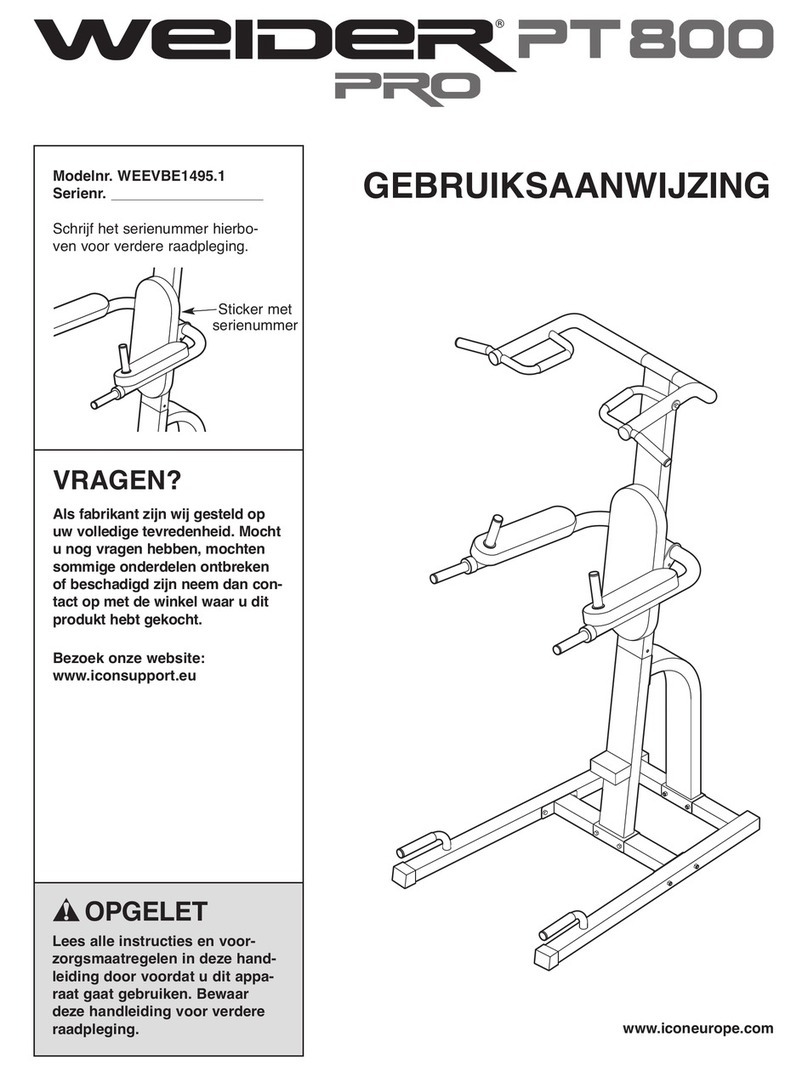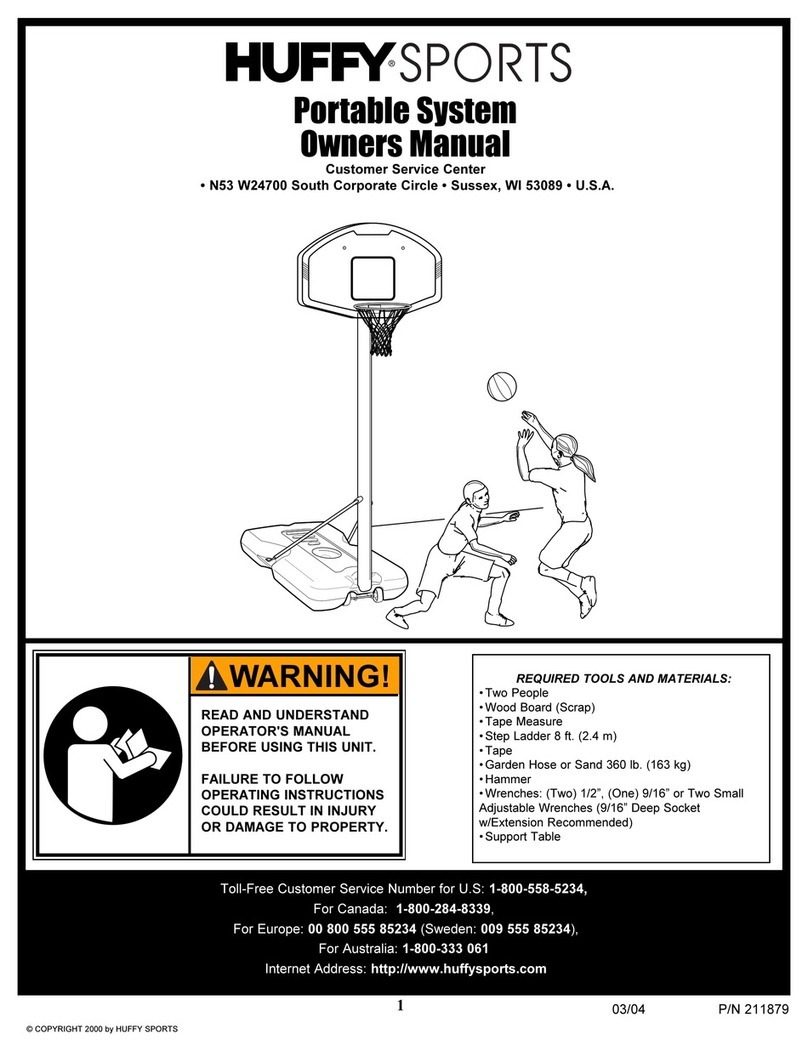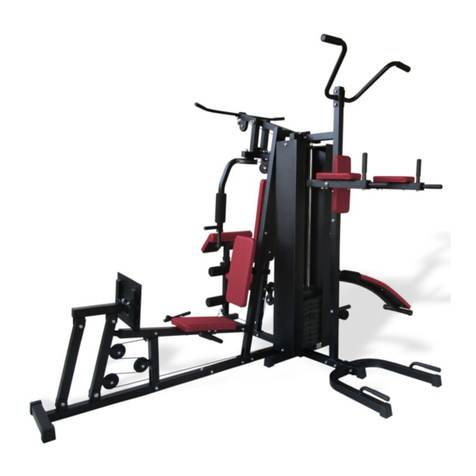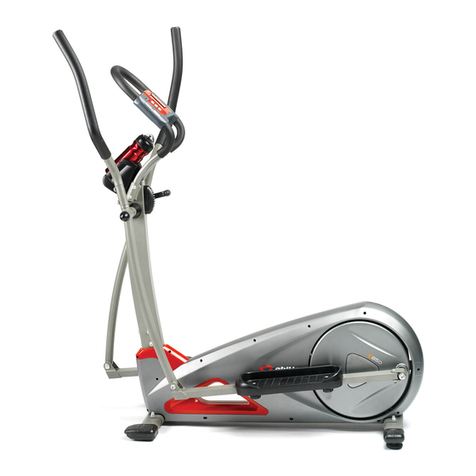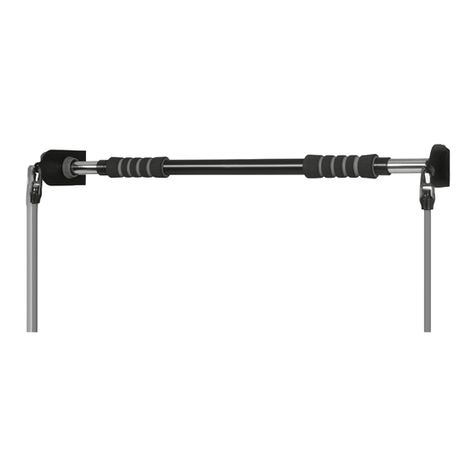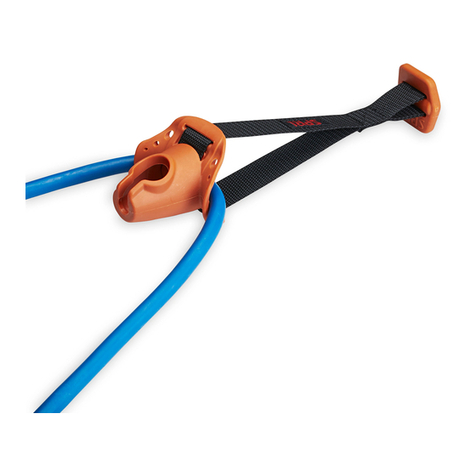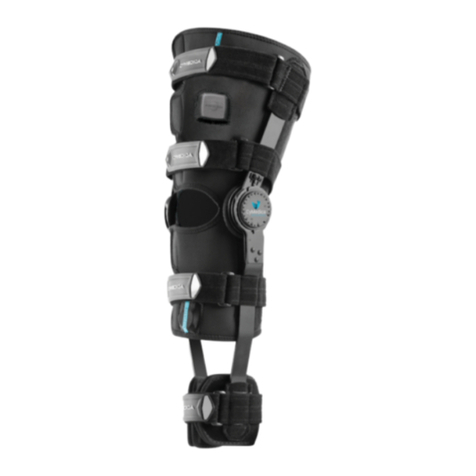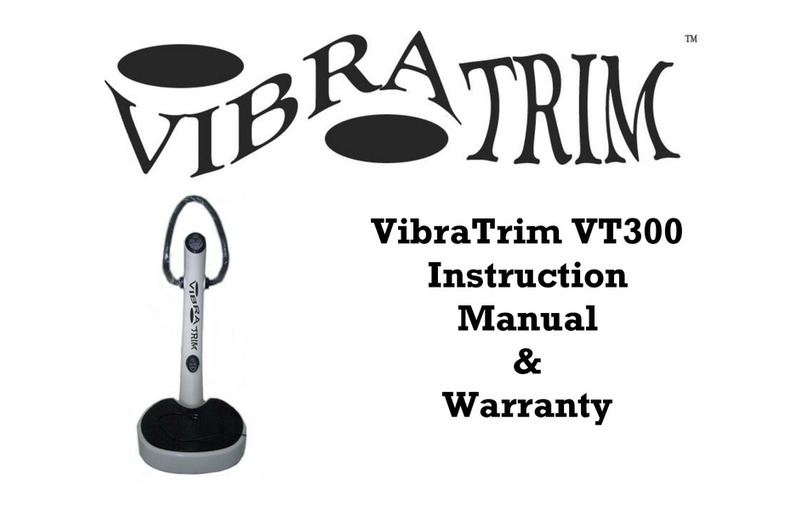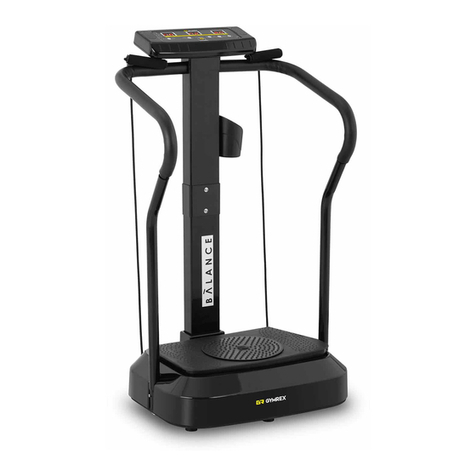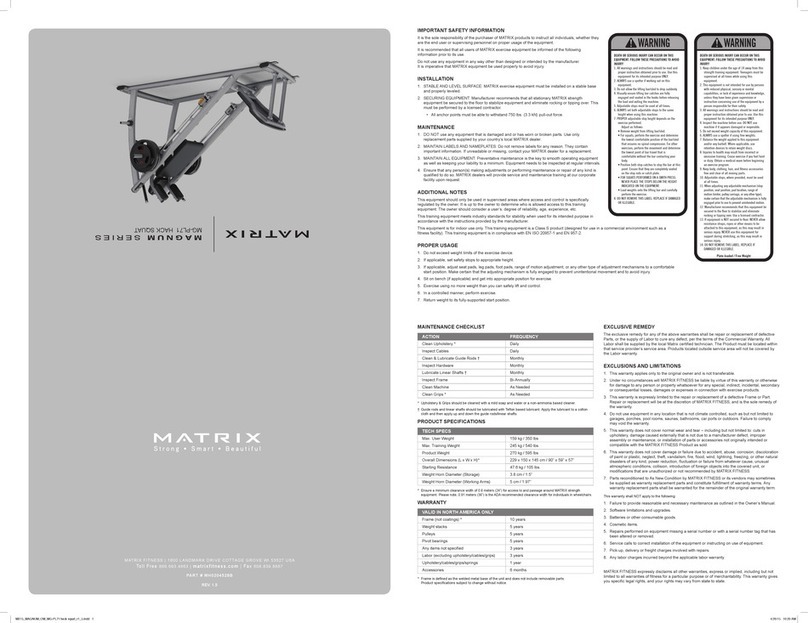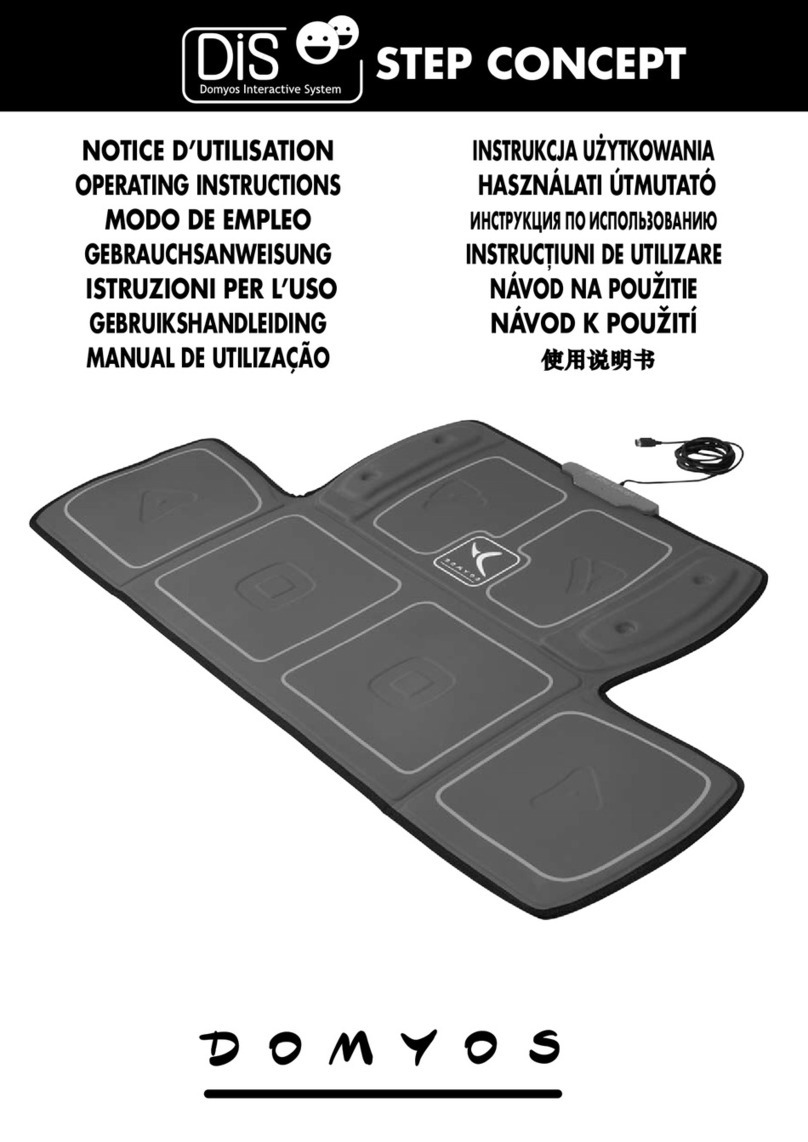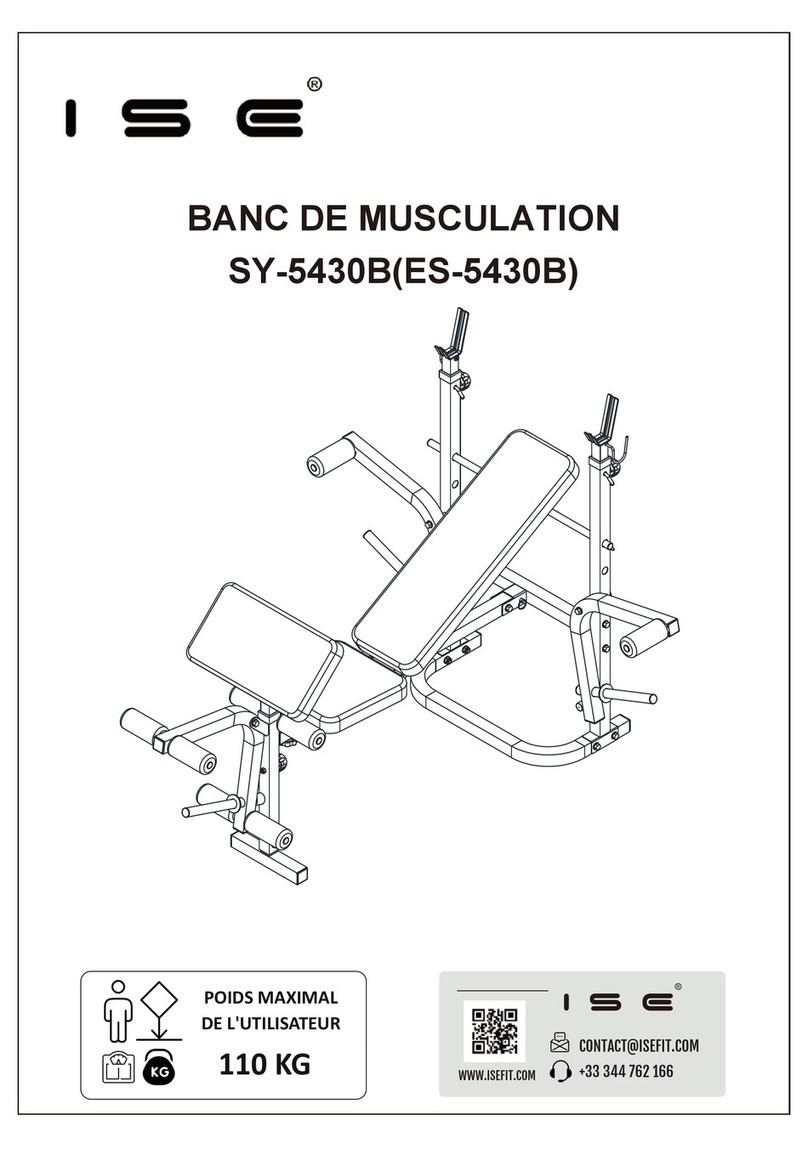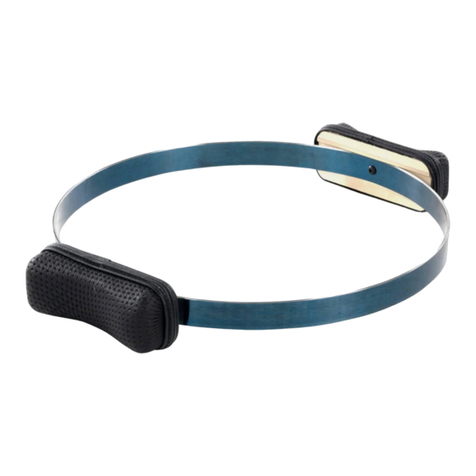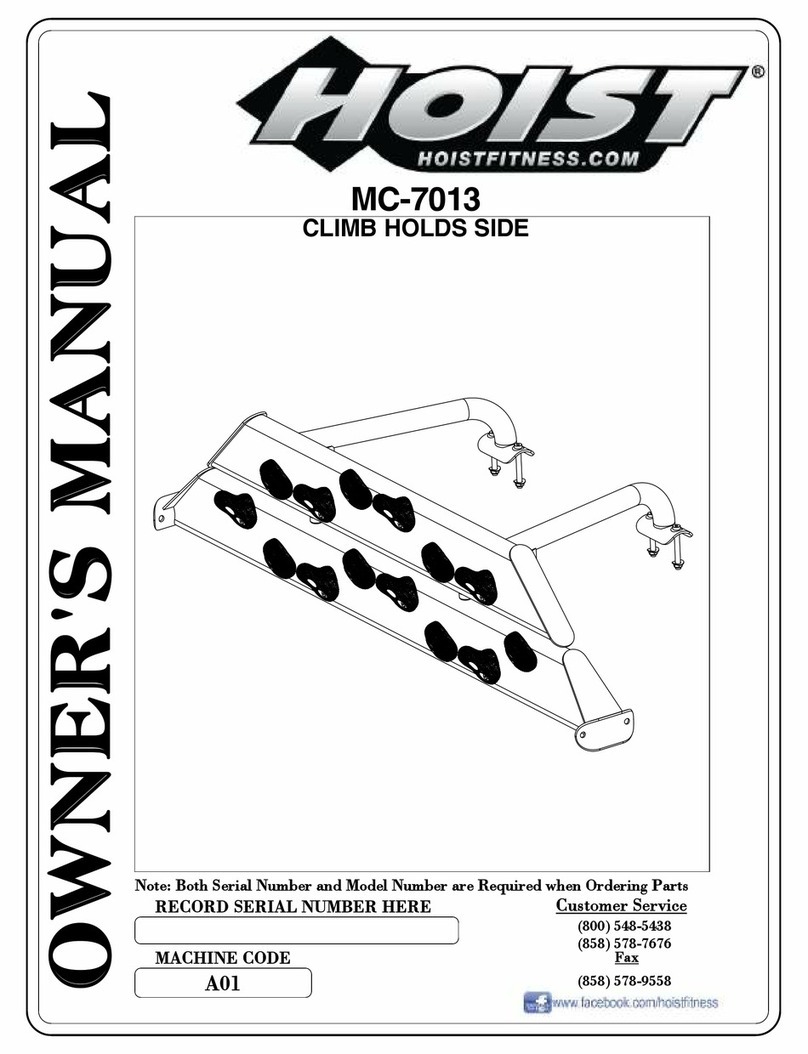Hasomed RehaStim User manual

HASOMED GmbH
RehaStim, RehaMove -
Operating Manual -
Version 1.3 / December 2009

I
HASOMED GmbH
RehaStim, RehaMove - Operating Manual -
Table of Contents
Part I General Description 1
........................................................................................................................ 11 Declaration of Conformity
........................................................................................................................ 22 Description of the RehaStim
........................................................................................................................ 23 Indications and Counter Indications
........................................................................................................................ 34 Adverse Effects
........................................................................................................................ 35 User Safety
........................................................................................................................ 56 Warning Notices
........................................................................................................................ 67 Precautionary Measures
........................................................................................................................ 88 Default Values and Adjustment Rangesof Stimulation Parameters
........................................................................................................................ 89 Technical Specifications
........................................................................................................................ 1010 Maintenance and Service Instructions
........................................................................................................................ 1011 Service Information
Part II Control Elements and Accessories of the RehaStim 15
........................................................................................................................ 151 Operating and Connection Elements
........................................................................................................................ 172 Accessories
Part III RehaMove - Motion Training with FES 22
........................................................................................................................ 221 Noteson Therapy with RehaMove
........................................................................................................................ 232 Safety Measures
........................................................................................................................ 243 Preparations
........................................................................................................................ 254 RehaMove Leg training
........................................................................................................................ 315 RehaMove Arm training
........................................................................................................................ 376 Select a Program in the Therapist Menu
........................................................................................................................ 387 Customize a Program
........................................................................................................................ 408 Test or customize current
........................................................................................................................ 429 Create a new Program from a Template
........................................................................................................................ 4410 Available Templates
........................................................................................................................ 4911 Finishing a Stimulation Session
Part IV Software for General Stimulation 51
........................................................................................................................ 511 Therapy instructions for General Stimulation
........................................................................................................................ 512 User Safety
........................................................................................................................ 513 Sequence Stimulation- Operation by Client
........................................................................................................................ 534 Gait Sequence - Operation by Client
........................................................................................................................ 555 Gait Training- Operation by Client
........................................................................................................................ 576 Use External Trigger
........................................................................................................................ 597 Choose program in therapist menu

IIContents
HASOMED GmbH
........................................................................................................................ 608 Customize a Program
........................................................................................................................ 639 Test or customize current
........................................................................................................................ 6410 Create a new Program from Template
........................................................................................................................ 6711 Templates for gait training and gait sequence
........................................................................................................................ 6912 Finishing a Stimulation Session
Part V Fault indication 70
........................................................................................................................ 701 Errors in the RehaStim
........................................................................................................................ 712 Errorsin the RehaMove
Part VI Declaration of Warranty 73
Part VII Address of manufacturer 74

HASOMED GmbH
RehaStim, RehaMove - Operating Manual -1
Version 1.3 / December 2009
1 General Description
1.1 Declaration of Conformity
EG-KONFORMITÄTSERKLÄRUNG
entsprechend Anhang II der Richtlinie 93/42/EWG über Medizinprodukte
EC DECLARATION OF CONFORMITY
according to annex II of the Council Directive 93/42/EEC concerning medical devices
Wir:
HASOMED GmbH
Paul – Ecke –Straße 1
39114 Magdeburg
We:
HASOMED GmbH
Paul – Ecke – Straße 1
39114 Magdeburg
erklären in alleiniger Verantwortung,
daß das Produkt / die Produkte:
declare under our sole
responsibility that the product/s:
funktioneller Elektrostimulator
Typ
RehaStim
RehaMove
functional electrical stimulator
type
RehaStim
RehaMove
den einschlägigen Bestimmungen der
Richtlinie 93/42/ EWG über
Medizinprodukte entsprechen.
meet the provisions of the
Council Directive 93/42/EEC
concerning medical devices
which apply to them.
Magdeburg, Sept. 1st 2005
Dr. P. Weber
Managing Director of HASOMED GmbH

General Description
HASOMED GmbH
2
Version 1.3 / December 2009
1.2 Description of the RehaStim
The RehaStim is a portable electrical stimulation device that generates impulses, on up to 8
channels simultaneously, to activate paralysed muscles via surface electrodes. The RehaStim
can be used as a portable (contains a battery) or stationary device for training and rehabilitation
applications. It can be used on its own or in conjunction with a motion trainer as RehaMove.
Numerous parameters for the power and time related progression of the stimulation can be
adjusted individually for each channel.
The parameters and operational conditions are presented on a graphical touch display screen
which makes interaction with the device easy.
The stimulator can be applied to functional electrical stimulation tasks of all kinds. In addition,
the stimulator software and hardware have been especially prepared for a specific rehabilitation
system as RehaMove using a movement exerciser.
The RehaStim stimulator is certified according to the EU guidelines EN60601-2-10 for medical
technical devices and systems.
1.3 Indications and Counter Indications
Functional electrical stimulation (FES) is an established method of electrotherapy and widely
applied for impaired extremities due to diseases or accidents.
However, the RehaStim could also be used for therapeutical electrical stimulation. The
RehaMove is a specialised system that has integrated the RehaStim specifically for exercise
training.
Indications of use
Clients interventions can have a variety of goals such as :
- Relaxation of muscle spasms
- Prevention or retardation of disuse atrophy
- Increasing local blood circulation
- Maintaining or increasing range of motion
Absolute counter indications
These counter indications absolute exclude clients from applying the RehaMove:
Cardiac pacemakers: Functional electrical stimulation must not be used in people with
cardiac pacemakers.
Pregnancy: Pregnant women must be excluded from stimulation treatment since possible
adverse effects are unknown and have not yet been scientifically investigated.
Fractures: Unhealed fractures in the following areas restrict the patient from using the
RehaMove until the fracture is stable:
- in the lower extremities, if you want to do leg training with the RehaMove.
- in the upper extremities, shoulder girdle or upper ribs, if you want to do arm training.
Additional counter indications for Arm training:
- unability to keep humeral head into glenohumeral joint utilizing electrically evoked
contraction of the supraspinatus
- grade 3 tear of either rotator cuff.

HASOMED GmbH
RehaStim, RehaMove - Operating Manual -3
Version 1.3 / December 2009
Relative counter indications
Denervated muscles: The RehaMove can not be used to evoke contractions in denervated
muscles in extremities.
Severe Spasticity: In most cases, spasticity will not disqualify an individual from using the
RehaMove. A stretching program may be necessary prior to therapy along with modified
therapy settings to reduce the likelihood of spasms occurring.
Limited Range of Motion/ Heterotopic Ossification:
- for leg training: clients can be positioned in their chair to accommodate for minor
limitations in joint ranges. However, a minimum of 100 degrees of hip and knee flexion is
recommended.
- for arm training: the client can be positioned in their chair to accommodate for minor
limitations in joint ranges: However, a minimum of 90 degrees of shoulder flexion and 100
degree of elbow flexion is recommended.
Severe Osteoporosis: Mild to moderate osteoporosis is prevalent in the majority of the SCI
population and in itself does not represent an immediate exclusion from the therapy. If the
osteoporosis has progressed so that there is an increased risk of fractures, the therapy should
be adjusted to account for the degree of osteoporosis.
Dysaesthetic Pain Syndrome: In some cases the pain syndrome may worsen making the
stimulation and the therapy may be too uncomfortable to continue.
Pressure sores or open wounds in area of treatment.
Implants: Recently (< 3month) implanted plates, pins, screws and other hardware underneath
or near the muscle groups which are to be stimulated.
Epilepsy: Clients who suffer from epilepsy may have to be excluded from stimulation
treatment since possible adverse effects are unknown and have not yet been scientifically
investigated.
Additional relative counter indications for Arm training:
- Implanted stimulators such as vegus nerve, phrenic, cardiac, cochlear, diaphragmatic
stimulators.
- Malignancy.
Allergies to electrode gel: If the client is aware to have an allergy to electrode gel, please
consult your medical supplier for alternatives.
1.4 Adverse Effects
Skin irritations or chemical burns may occur if there is insufficient contact between the skin
and electrodes or if the parameters have been adjusted incorrectly. Therefore when using
stimulation for the first time, check the area underneath the electrodes after 2 minutes! If
you find that there is bad electronic contact, please use contact gel available from medical
suppliers.
In known allergies against electrode material, be careful when making your choice.
Electrodes must not be placed on excoriations or gashes.
1.5 User Safety
Please read the manual carefully before using this device!
Caution should be exercised during the treatment of individuals with the following conditions:

General Description
HASOMED GmbH
4
Version 1.3 / December 2009
Patients with ANY implanted medical device.
Patients with suspected or diagnosed heart problems.
Patients with suspected or diagnosed epilepsy.
Patients with history of hip or knee dislocation/subluxation
Caution should be used in the presence of the following:
a. history of uncontrolled autonomic dysreflexia;
b. history of lower limb stress fractures;
c. history of severe spasticity or spastic response to application of electrical stimulation;
d. when there is a tendency to hemorrhage following acute trauma or fracture; and
e. following recent surgical procedures when muscle contraction may disrupt the healing
process.
Additional Cautions for Upper Extremity Ergometry:
- A history of upper limb stress fractures.
- Uncontrolled hypertension
Caution: Federal law restricts this device to sale by or on the
order of a practitioner licensed by the law of the State in which
he/she practices to use or order the use of the device.
The treatment must only be carried out after an introduction by a doctor or therapist.
The treating doctor must be kept informed about changes in the ailment/disability and of any
new ailments.
All accessories which are not provided by HASOMED GmbH
and which the user wants to connect to the interfaces of the
unit, must verifiably meet the according EN specifications (e.g.
EN60601-1 for electrical medical devices and EN6950 for data
processing devices). Furthermore all combinations must meet
the system standard EN60601-1-1. For queries please contact
the technical support at HASOMED GmbH (manufacturer).
The treatment can influence electrical monitoring devices (e.g. ECG) if they are simultaneously
connected to the client.
Do not use when user is simultaneously connected to a high frequency surgical unit, because
this may lead to burns underneath the electrodes.
Do not use near (within1.5m) devices with high frequency (HF) range electromagnetic
radiation, such as micro- and short-wave devices or welding units.
Do not put electrode cables into AC mains power outlets.
Only the provided charger (TR 30RAM090) and plug must be used to charge this device.
The safety and effectiveness of the treatment depend on the appropriate use of the device.
Inappropriate use of this device is dangerous.

HASOMED GmbH
RehaStim, RehaMove - Operating Manual -5
Version 1.3 / December 2009
1.6 Warning Notices
If the documentation is not clear about the use of this device in a
particular way or on the connection of this device to another device
then the manufacturer or an expert is to be contacted to ensure that
the users safety is not put at risk.
If the device is used in conjunction with the movement therapy machine as part of the
RehaMove system, only the provided connection parts (cables, electrodes etc.) must be used.
If the patient’s blood pressure or heart rate reaches a level that the clinician considers a
compromise to safety, or if the patient feels faint or nauseated, the session should be
stopped immediately and appropriate medical action should be taken. If the patient
begins to feel light-headed or nauseated, stop the treatment immediately.
Some medical conditions can be aggravated by physical activity. If symptoms of a medical
condition occur during or after a therapy session, consult your clinician immediately.
If directed by the clinician, the patient’s blood pressure and heart rate should be monitored
during the therapy session.
The long-term effects of chronic electrical stimulation are unknown.
The long term effects of electrical stimulation on a pregnant individual (mother and baby)
are unknown.
Stimulation should not be applied over the carotid sinus nerves, particularly in clients with a
known sensitivity to the carotid sinus reflex.
Stimulation should not be applied over the neck or mouth. Severe spasm of the laryngeal and
pharyngeal muscles may occur and the contractions may be strong enough to close the airway
or cause difficulty in breathing.
Stimulation should not be applied transthoracically in that the introduction of electrical
current into the heart may cause cardiac arrhythmias.
Stimulation should not be applied transcerebrally.
Stimulation should not be applied over swollen, infected, or inflamed areas or skin eruptions,
e.g., phlebitis, thrombophlebitis, varicose veins, etc.
Stimulation should not be applied over, or in proximity to, cancerous diseases.
Electrode placement and stimulation settings should be based on the guidance of the
prescribing practitioner.
Powered muscle stimulators should be kept out of the reach of children. Children should only
use this device under adult supervision. Never leave the RehaMove unattended when
children are present.
The arm crank should not be used unless continuous assistance is available as while using
this device it may not be possible for the patient to stop the therapy while their arm(s) / hand
(s) are secured.

General Description
HASOMED GmbH
6
Version 1.3 / December 2009
Safety instructions for electrode use:
Skin must always be clean, dry and free from lotion.
When Electrodes begin losing adhesion, gently rubbing one or two
drops of water onto gel surface (Re-hydrate Gel) may extend usage.
If not, replace with new Electrodes.
In the USA Federal Law restricts the device to sale by, or on the
order of, a physician or other practitioner licensed to use the device.
Do not apply to broken skin. Should a skin rash or a skin burn
occur, immediately discontinue use and contact your clinican
Do not stimulate while driving or operating machinery.
Do not exceed 0.1 watts/cm².
Adjust stimulator according to stimulator or/and clinician instructions for your treatment.
For your safety an comfort, turn off the stimulator before you attempt to remove
electrodes from your skin.
Always lift Electrodes from the edge not the leadwire.
Always replace Electrodes to “ON” side of the storage liner.
Always store and seal Electrodes in the original package in a cool place.
Never submerge Electrodes.
Using Hot or Cold packs for long periods of time can cause adhesive separation.
Only one driver per Electrode (Single Patient Use).
Replace Electrodes when they show wear or tear.
1.7 Precautionary Measures
Clients with an implanted electrical device (e.g. cardiac pacemaker)
must not be treated with electrical stimulation. In necessary cases, a
doctor or an expert medical engineer must be consulted in advance
and carry out a risk analysis before making any decision.
If the stimulator is to be used near the ribcage, consider and analyse the risk of cardiac
fibrillation.
Do not use when user is simultaneously connected to a high frequency surgical unit because
this may lead to burns underneath the electrodes.
Electrodes must not be placed on excoriations or gashes.
Do not use near (e.g. <1.5m) an HF-range or micro-wave device because that may cause
variations of the initial values of the stimulator.
Do not use near (<1m) working mobile phones or radio/ wireless transmitting sets.
For the correct operation, electrostatic loadings are to be avoided.
Protect the device from water. If the device falls into water do not use it any longer and contact
manufacturer for further instructions.
Store the device in the original packaging to protect it from damage and dirt.
Do not pass the device on to other people.

HASOMED GmbH
RehaStim, RehaMove - Operating Manual -7
Version 1.3 / December 2009
Users should be always accompanied by an assistant.
Safety of powered muscle stimulators for use during pregnancy has not been
established.
Caution should be used for patients with suspected or diagnosed heart problems.
Caution should be used for patients with suspected or diagnosed epilepsy.
Caution should be used in the presence of the following:
a. When there is a tendency to hemorrhage following acute trauma or fracture;
b. Following recent surgical procedures when muscle contraction may disrupt the
healing process;
c. Over the menstruating or pregnant uterus; and
d. Over areas of the skin which lack normal sensation.
Some patients may experience skin irritation or hypersensitivity due to the electrical stimulation
or electrical conductive medium. The irritation can usually be reduced by using an alternate
conductive medium, or alternate electrode placement.
Electrode placement and stimulation settings should be based on the guidance of the
prescribing practitioner.
Powered muscle stimulators should be kept out of the reach of children.
Powered muscle stimulators should be used only with the leads and electrodes recommended
for use by the manufacturer.
Portable powered muscle stimulators should not be used while driving, operating machinery, or
during any activity in which involuntary muscle contractions may put the user at undue risk of
injury.

General Description
HASOMED GmbH
8
Version 1.3 / December 2009
1.8 Default Values and Adjustment Ranges of Stimulation
Parameters
1.8.1 Features
duration of the stimulation
impulses (pulse width):
20µs to 500µs incremented in steps of 10µs
current:
20mA to 130 mA incremented in steps of 5 mA
number of channels:
2 modules with 4 channels each (running parallel constantly)
Stimulation frequency:
10 to 50 Hz in steps of 5 Hz
voltage reserve:
150V
operation time:
about 2 to 2.5 hours with medium stimulation parameters (with a
load of 1100Ohm and 100nF)
charging time for integrated
battery
about 3.5 hours
High user safety: Electrode connections are tested before stimulation starts
Emergency stop button for unexpected sudden danger
1.8.2 General Stimulation Parameters
Parameter
Minimum
Maximum
Increment
Default value
Zero angle
0°
360°
10°
90°
Ramp
0 pulses
21 pulses
1 pulse
3 pulses
1.8.3 Reference values (can be changed but not saved individually for each
user)
Parameter
Minimum
Maximum
Increment
Default value
Cadence (in rpm)
0 rpm
50 rpm
5 rpm
20 rpm
Pulse width
20 µs
500 µs
10 µs
20 µs
1.9 Technical Specifications
RehaStim (stand
alone device)
Size and Weight:
Length
13,5 cm
Width
15 cm
Height
7 cm

HASOMED GmbH
RehaStim, RehaMove - Operating Manual -9
Version 1.3 / December 2009
Shipping weight
5 kg
Power Supply:
Power Source(s) :
AC and/or Akku
Method of Line Current
Isolation
- TR 30RAM090 nach EN60601-1,
- SANYO, NiMh, C= 2700 mAh,
Power connection
100-240 VAC 50-60 Hz
Power input
max. 150 W
Environment conditions:
· In use
· Transporting/storing
· Relative humidity
0 °C to 40 °C
-20 °C to +60 °C
0 to 85% Rh, not condensating
Stimulator / Controller
Display / interface
Touch-sensitive LCD
Communications
USB / RS232
Operating system
custom software
Maximum voltage output
154 V
Maximum number of
channels
8
Current output per channel
20 130mA incremented in steps of 5 mA
Waveform type
Biphasic, charged balanced
Duration of the stimulation
impulses (pulse width):
20 500µs incremented in steps of 10µs
Stimulation frequency:
10 to 50 Hz in steps of 5 Hz
Degree of protection
Type BF Applied Part
RehaMove (consists
of RehaStim and
Motorized Ergometer)
RehaStim
see above
Motorized Ergometer
Size and Weight:
Length
60 cm
Width
56 cm

General Description
HASOMED GmbH
10
Version 1.3 / December 2009
Height
100cm
Shipping weight
leg trainer 31 kg
leg and arm trainer 38 kg
Power Supply:
Power connection
115V~, 50/60Hz 230V~, 5/60Hz
Power input
130VA 130VA
Protective type
IPXO
Classification
protection class I, Type B
Medical device according to
German Act on Medical
devices
IIa
Environment conditions:
· In use
· Transporting/storing
· Relative humidity
0 °C to 40 °C
-20 °C to +60 °C
0 to 85% Rh, not condensating
1.10 Maintenance and Service Instructions
Cleaning the stimulator
To clean the stimulator use normal detergent. Do not use spray cleaners. Use a semi-moist
cleaning tissue.
For cleaning the MOTOmed viva2, please refer to its user manual.
Maintaining the Stimulator accumulator
To maintain the stimulator accumulator, please every three months
- let it discharge completely until the stimulator turns off automatically
- then recharge it fully.
Maintaining the technical safety
The manufacturer recommends for the stimulator RehaStim a maintenance interval of 2
years in order to guarantee the safety standards for further use. For this please send your
RehaStim to the manufacturer at your own account.
HASOMED will examine the adherence to the technical parameters and the function of the
monitoring elements.
1.11 Service Information
At the end of the list of programmes in the therapist menu you find the service information.

HASOMED GmbH
RehaStim, RehaMove - Operating Manual -11
Version 1.3 / December 2009
Service information
window
Service menu
The service menu is contained in the list of available programs in
the therapist menu in the program selection window.
The service information window contains service relevant data:
- the software version
- the state of the battery in % and the current battery voltage
- the zero angle of the device which has been adjusted during
introduction
Press OK if you want to enter the service menu.
Service options
Service options
In the service options window select what you want to do:
- change the reference angle/ "Zero angle" at the RehaMove (see
chapter Zero angle), or
- reset the RehaStim to factory defaults (see chapter Reset to
Default/ Factory settings).
- read ID of your Stimulator (see chapter Read Stimulator ID)
- upgrade your stimulator software under "Prog. Update" (see
chapter Program Update).
Use the arrow keys to scroll up and down between options and
press OKto select one.
1.11.1 "Zero angle"
The "zero angle" is the RehaMove calibration off-set value used to shift the actual physical
zero point of the pedal angle sensor.
The standard zero angle is defined as the sensor angle in a certain position.
It is recommended to check the zero angle
- if the MOTOmed viva2 cockpit/controller has been exchanged or
- if the stimulator was moved to a different MOTOmed viva2.
Warning! The zero angle is a device specific parameter and not part of the individual
parameters.
This means that any changes to this variable will affect other parameter sets too:
Changing the zero angle for RehaMove arm training affects all RehaMove arm training
programs.
Changing the zero angle for RehaMove leg training affects all RehaMove leg training
programs.

General Description
HASOMED GmbH
12
Version 1.3 / December 2009
Service options
To check your RehaMove reference angle/ "zero angle"
In the service options window select
- Zero A. leg for checking the reference angle for RehaMove leg
training
- Zero A. arm for checking the reference angle for RehaMove arm
training.
Use the arrow keys to scroll up and down between options and
press OKto select one.
Adjust zero angle
Adjust "zero angle" for RehaMove leg training
The RehaMove leg training zero angle/ reference position is
defined as the MOTOmed viva2 leg pedal position:
- right foot pedal is in horizontal position +
- right foot pedal points towards the patient (= backward).
To test the zero angle:
1. Start MOTOmed viva2 leg trainer, choose cadence of 0 or 1
rpm.
The window shows the default zero angle at the right side.
In the left corner the current value from the sensor is constantly
written.
2. Let the viva 2 run and watch the current angle value in the left
corner change.
Read the value the viva 2 tells you in the reference position (see
above).
If this value is not the same as the default zero angle at the right
side, change the value at the right side to read value.
The zero angle is adjusted correctly when both values in this
window are the same the very moment the pedal is in the reference
position.
Confirm with OK.
3. Please be aware that changing the zero angle affects all
programs. Save only when you are sure. If you are not sure,
contact the manufacturer.
Then the zero angle test is finished.
Adjust zero angle
Adjust "zero angle" for RehaMove arm training
The RehaMove arm training zero angle/ reference position is
defined as the MOTOmed viva2 arm handle position:
- right arm handle is in horizontal position +
- right arm handle points towards the patient (= backward).
To test the zero angle:
1. Start MOTOmed viva2 arm trainer, choose cadence of 0 or 1

HASOMED GmbH
RehaStim, RehaMove - Operating Manual -13
Version 1.3 / December 2009
rpm.
The window shows the default zero angle at the right side.
In the left corner the current value from the sensor is constantly
written.
2. Let the viva 2 run and watch the current angle value in the left
corner change.
Read the value the viva 2 tells you in the reference position (see
above).
If this value is not the same as the default zero angle at the right
side, change the value at the right side to read value.
The zero angle is adjusted correctly when both values in this
window are the same the very moment the pedal is in the reference
position.
Confirm with OK.
3. Please be aware that changing the zero angle affects all
programs. Save only when you are sure. If you are not sure,
contact the manufacturer.
Then the zero angle test is finished.
If you want to check the adjustments once more, use LED cables and start a program with few
channels, e.g. Ri. 2 Ch.
Test whether the lights shine at the correct positions.
Note: When you reset your stimulator to the default /factory settings (see chapter Reset to
Default/ Factory settings), the zero angle is not reset!
1.11.2 Reset to Default/ Factory Settings
Service options
Service options
To re-establish the RehaStim factory default settings, in the service
options window select Defaults..
Use the arrow keys to scroll up and down between options and
press OKto select.
Reset the RehaStim to factory defaults
In order to reactivate the factory default values, press OK.
All defaults settings are re-established - apart from the unit
individual zero angle (see chapter "Zero angle"). The zero angle is
not reset!
However this eliminates all changes or customizations you made!

General Description
HASOMED GmbH
14
Version 1.3 / December 2009
1.11.3 Read Stimulator ID
Service options
Service options
In the service options window select Read ID..
Use the arrow keys to scroll up and down between options and
press OK.
The stimulator ID is visible. After a few seconds the screen returns
to Service options.
1.11.4 Program Update
Service options
Service options
In the service options window upgrade your stimulator software
under "Prog. Update".
Please contact manufacturer for a software upgrade and upgrade
instructions.
Use the arrow keys to scroll up and down between options and
press OK.

HASOMED GmbH
RehaStim, RehaMove - Operating Manual -15
Version 1.3 / December 2009
2 Control Elements and Accessories of the RehaStim
2.1 Operating and Connection Elements
Picture1: Front view with control elements
With the main switch the stimulator is turned on and off.
The device is operated with a graphic LCD touch screen. Depending on task and status, the
touch screen displays specific readouts and switch elements.
The stimulator is powered from an internal battery. When charging use only the provided
battery charger! While the battery is being charged the charge light (LED) will shine yellow.
Stimulation is still possible during charging.
When stimulation is carried out, the stimulation light (LED) shines yellow. If an error occurs,
this light shines red (see chapter Fault Indication).

Control Elements and Accessories of the RehaStim
HASOMED GmbH
16
Version 1.3 / December 2009
Picture 2: Back view with interface elements
There are 4 connection points for the electrode cables, each cable connecting two channels.
The RehaMove interface (SPI/RS232) should be connected to the corresponding device.
The emergency stop button must be connected to the corresponding interface. With it the user
can immediately turn off the stimulation in the case of an emergency.
The USB interface is used to connect the stimulator to a computer for software updates.

HASOMED GmbH
RehaStim, RehaMove - Operating Manual -17
Version 1.3 / December 2009
2.2 Accessories
The stimulator and its accessories were delivered to you in a transport case.
Picture: RehaStim accessories
Its contents are described below:
- 1 stimulator RehaStim
- 1 emergency stop button
- 4 electrode cables
- 1 power supply for the stimulator
- 1 cable to connect the movement exerciser and RehaStim
- 1 USB connection cable to PC
- 4 sets of electrodes
separately:
- bracket with bolt to fix the stimulator onto the movement therapy machine
Picture: RehaStim with connected accessories
This manual suits for next models
1
Table of contents
